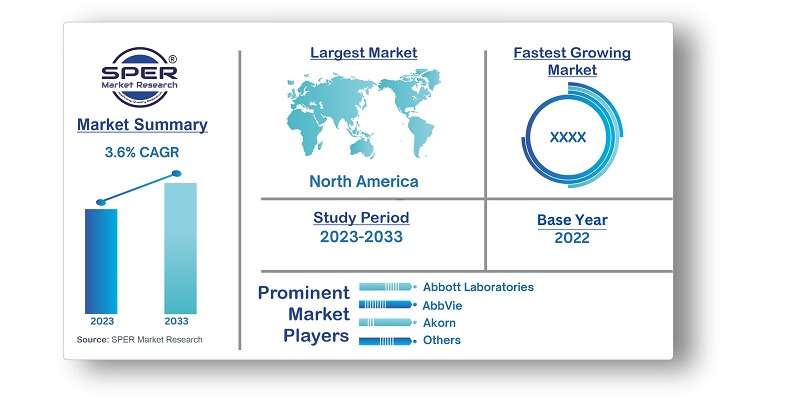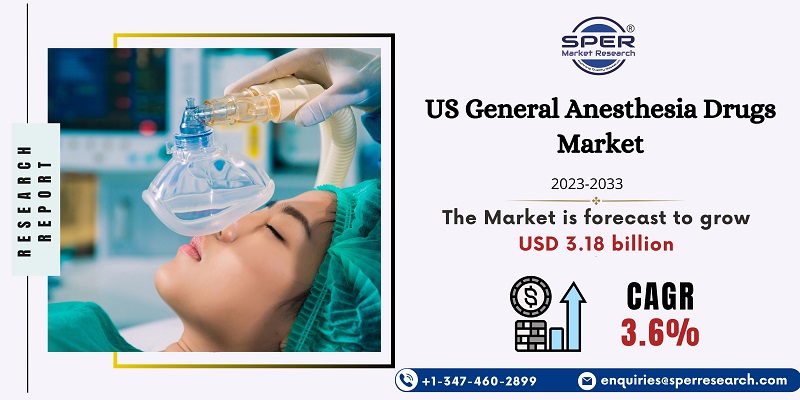
US General Anesthesia Drugs Market Growth, Trends, Size, Demand, Revenue and Future Outlook
US General Anesthesia Drugs Market Size- By Route of Administration, By End User- Regional Outlook, Competitive Strategies and Segment Forecast to 2033
| Published: Jan-2024 | Report ID: PHAR2402 | Pages: 1 - 106 | Formats*: |
| Category : Pharmaceutical | |||
- 2020: Radio-frequency identification technology was integrated into smart labels for the first time by Fresenius Kabi in 2020. Diprivan (Propofol) 200 mg per 20 mL (10 mg per mL) Injectable Emulsion, USP, the first RFID smart-labeled pharmaceutical, was released in the US.
- 2020: 2020 saw the US debut of the Propofol Injectable Emulsion, USP, in vials of 20 mL, 50 mL, and 100 mL by Hikma Pharmaceuticals USA Inc.


| Report Metric | Details |
| Market size available for years | 2019-2033 |
| Base year considered | 2022 |
| Forecast period | 2023-2033 |
| Segments covered | By Route of Administration, By End User |
| Regions covered |
|
| Companies Covered | Abbott Laboratories, AbbVie, Akorn, AstraZeneca plc, Baxter International Inc., Gilead Sciences, Inc, Heritage Pharmaceuticals Inc., Novartis AG, Par Pharmaceutical, Pfizer Inc., Others |
- Pharmaceutical Companies
- Hospitals and Clinics
- Anesthesiologists and Anesthesia Providers
- Medical Device Companies
- Government Health Departments
- Distributors and Suppliers
- Others
| By Route of Administration: |
|
| By End User: |
|
| By Region: |
|
- US General Anesthesia Drugs Market Size (FY’2023-FY’2033)
- Overview of US General Anesthesia Drugs Market
- Segmentation of US General Anesthesia Drugs Market By Route of Administration (Inhalational, and Intravenous)
- Segmentation of US General Anesthesia Drugs Market By End User (Ambulatory Surgery Centres, Hospitals)
- Statistical Snap of US General Anesthesia Drugs Market
- Expansion Analysis of US General Anesthesia Drugs Market
- Problems and Obstacles in US General Anesthesia Drugs Market
- Competitive Landscape in the US General Anesthesia Drugs Market
- Impact of COVID-19 and Demonetization on US General Anesthesia Drugs Market
- Details on Current Investment in US General Anesthesia Drugs Market
- Competitive Analysis of US General Anesthesia Drugs Market
- Prominent Players in the US General Anesthesia Drugs Market
- SWOT Analysis of US General Anesthesia Drugs Market
- US General Anesthesia Drugs Market Future Outlook and Projections (FY’2023-FY’2033)
- Recommendations from Analyst
1.1. Scope of the report1.2. Market segment analysis
2.1. Research data source2.1.1. Secondary Data2.1.2. Primary Data2.1.3. SPER’s internal database2.1.4. Premium insight from KOL’s2.2. Market size estimation2.2.1. Top-down and Bottom-up approach2.3. Data triangulation
4.1. Driver, Restraint, Opportunity and Challenges analysis4.1.1. Drivers4.1.2. Restraints4.1.3. Opportunities4.1.4. Challenges4.2. COVID-19 Impacts of the US General Anesthesia Drugs Market
5.1. SWOT Analysis5.1.1. Strengths5.1.2. Weaknesses5.1.3. Opportunities5.1.4. Threats5.2. PESTEL Analysis5.2.1. Political Landscape5.2.2. Economic Landscape5.2.3. Social Landscape5.2.4. Technological Landscape5.2.5. Environmental Landscape5.2.6. Legal Landscape5.3. PORTER’s Five Forces5.3.1. Bargaining power of suppliers5.3.2. Bargaining power of buyers5.3.3. Threat of Substitute5.3.4. Threat of new entrant5.3.5. Competitive rivalry5.4. Heat Map Analysis
6.1. US General Anesthesia Drugs Market Manufacturing Base Distribution, Sales Area, Product Type6.2. Mergers & Acquisitions, Partnerships, Product Launch, and Collaboration in US General Anesthesia Drugs Market
7.1. US General Anesthesia Drugs Market Value Share and Forecast, By Route of Administration, 2023-2033
7.2. Inhalational7.2.1. Desflurane7.2.2. Isoflurane7.2.3. Nitrous Oxide7.2.4. Sevoflurane7.3. Intravenous7.3.1. Benzodiazepines7.3.2. Etomidate7.3.3. Fentanyl7.3.4. Ketamine7.3.5. Methohexital Sodium7.3.6. Propofol7.3.7. Remifentanil7.3.8. Others
8.1. US General Anesthesia Drugs Market Value Share and Forecast, By End User, 2023-20338.2. Ambulatory Surgery Centres8.3. Hospitals
9.1. US General Anesthesia Drugs Market Size and Market Share
10.1. US General Anesthesia Drugs Market Size and Market Share By Route of Administration (2019-2026)10.2. US General Anesthesia Drugs Market Size and Market Share By Route of Administration (2027-2033)
11.1. US General Anesthesia Drugs Market Size and Market Share By End User (2019-2026)11.2. US General Anesthesia Drugs Market Size and Market Share By End User (2027-2033)
12.1. US General Anesthesia Drugs Market Size and Market Share By Region (2019-2026)12.2. US General Anesthesia Drugs Market Size and Market Share By Region (2027-2033)12.3. Central Region12.4. North Region12.5. South Region
13.1. Abbott Laboratories
13.1.1. Company details13.1.2. Financial outlook13.1.3. Product summary13.1.4. Recent developments13.2. AbbVie13.2.1. Company details13.2.2. Financial outlook13.2.3. Product summary13.2.4. Recent developments13.3. Akorn13.3.1. Company details13.3.2. Financial outlook13.3.3. Product summary13.3.4. Recent developments13.4. AstraZeneca plc13.4.1. Company details13.4.2. Financial outlook13.4.3. Product summary13.4.4. Recent developments13.5. Baxter International Inc.13.5.1. Company details13.5.2. Financial outlook13.5.3. Product summary13.5.4. Recent developments13.6. Gilead Sciences, Inc13.6.1. Company details13.6.2. Financial outlook13.6.3. Product summary13.6.4. Recent developments13.7. Heritage Pharmaceuticals Inc.13.7.1. Company details13.7.2. Financial outlook13.7.3. Product summary13.7.4. Recent developments13.8. Novartis AG13.8.1. Company details13.8.2. Financial outlook13.8.3. Product summary13.8.4. Recent developments13.9. Par Pharmaceutical13.9.1. Company details13.9.2. Financial outlook13.9.3. Product summary13.9.4. Recent developments13.10. Pfizer Inc.13.10.1. Company details13.10.2. Financial outlook13.10.3. Product summary13.10.4. Recent developments13.11. Others
SPER Market Research’s methodology uses great emphasis on primary research to ensure that the market intelligence insights are up to date, reliable and accurate. Primary interviews are done with players involved in each phase of a supply chain to analyze the market forecasting. The secondary research method is used to help you fully understand how the future markets and the spending patterns look likes.
The report is based on in-depth qualitative and quantitative analysis of the Product Market. The quantitative analysis involves the application of various projection and sampling techniques. The qualitative analysis involves primary interviews, surveys, and vendor briefings. The data gathered as a result of these processes are validated through experts opinion. Our research methodology entails an ideal mixture of primary and secondary initiatives.



Frequently Asked Questions About This Report
PLACE AN ORDER
Year End Discount
Sample Report
Pre-Purchase Inquiry
NEED CUSTOMIZATION?
Request CustomizationCALL OR EMAIL US
100% Secure Payment






Related Reports
Our Global Clients
Our data-driven insights have influenced the strategy of 200+ reputed companies across the globe.




















